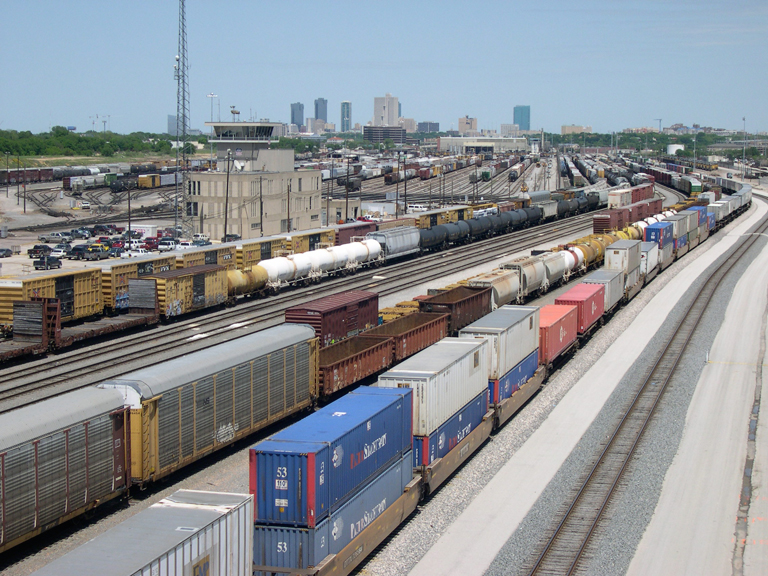Two years ago, Fort Worth Mayor Mike Moncrief, along with city council members and dozens of business leaders, traveled to the Pacific Northwest to look at modern streetcar systems in
It seemed that the time was right to build such a system here, initially to link downtown with the near south and west sides of town. Business leaders were on board, and surveys showed widespread popular support.
 More recently, however, members of council seem to have changed their tune. Twice in recent months, according to sources, some council members have worked behind the scenes to divert federal grant money specified for streetcars to other transportation projects.
More recently, however, members of council seem to have changed their tune. Twice in recent months, according to sources, some council members have worked behind the scenes to divert federal grant money specified for streetcars to other transportation projects.
Last fall, the North Central Texas Council of Governments obtained a $1.6 million federal grant to hire an engineering firm for a
But at a council meeting last month, some members tried to get that money switched over to a study of the Tower 55 problem on downtown’s southeast edge, where slow-moving freight trains are causing a major transportation snarl.
When officials of the North Central Texas Council of Governments told city officials the money couldn’t be switched wholesale, the council still cut the funding for the streetcar study in half and told the engineering firm to reduce its scope.
In February,
Part of the council’s attempts to change direction of federal funds and
“We have gotten behind on the road projects that voters approved in the 2004 bond vote,” said council member Danny Scarth. ”We don’t want to put streetcars ahead of that.” Scarth said the projects are behind schedule because of a lack of state transportation funding.
As far as using only half of the federal grant money for the streetcar study at this time, Scarth said, “If we decide to proceed after the first part of the study is done, the rest of the grant money will still be there for us.”
But the cuts also mean the city has pushed back completion of the study by six months to a year. And some city hall observers — and streetcar supporters — believe that delay may threaten future funding for the system by causing federal officials to question the city’s commitment to the project.
“There is greater and greater competition among cities to get these transportation funds, and the feds will be likely to only fund those projects where the cities have committed local funding and have full support,” said Michael Hennig, president of Civtech Solutions, a local consulting firm that works with governments to obtain federal grants.
“In all honesty, I think what we are seeing in
In the study’s first phase, Omaha-based HDR Engineering Inc. will identify the best routes and economic impact analysis. Phase two will recommend a plan to fund the project. If council decides to proceed, phase three would study preliminary engineering plans and environmental assessments.
Council member Jungus Jordan said approving only part of the study now is a smart move because “the engineering portion of the study makes the assumption that streetcars are the solution to the transportation problems we have.
“But we don’t have gridlock in and around downtown
The commuter rail line from southwest
While the commuter rail and Tower 55 projects are expected to be mostly federally funded, the streetcar lines would be paid for largely with local tax money. Still,
A modern streetcar system has great support among real estate developers, especially those in the Hospital and Cultural districts, which could get some of the first routes. But public support is also there. In a 2009 survey done for the city, 48 percent of the citizenry was “very supportive” of implementing a streetcar system, with 25 percent “somewhat supportive.” Only eight percent indicated they were “not supportive.”
This year, in his state of the city address, Moncrief emphasized the need for more mass transit options. “Commuter rail, streetcars, and other alternative modes of transportation also remain a priority for me and this city council,” he said. “Unfortunately,
Streetcar supporters are regrouping and trying to make the issues clear to local residents. “There is a lot of misinformation out there on streetcars right now,” said Southside developer Fran McCarthy, who has served on both streetcar study panels and chairs the council-appointed Central City Redevelopment Committee.
McCarthy said the central city committee is going to add more information to an influential white paper on streetcars that it published several years ago and reissue it to political and business leaders. A Facebook page for streetcar supporters has also been established and now has more than 900 “friends.”
“After that West Coast trip, everyone was on board, and I’m not sure what has happened since then,” McCarthy said. “They are holding streetcars to a much higher standard, and we have done so many more studies on streetcars than they have for commuter rail.
“They say [the streetcar system] doesn’t pay for itself from the fare box, but neither does any mass transit system, including commuter rail,” the developer said. But studies show that modern streetcar systems go far beyond paying for themselves in the long run “because of the economic development and increased tax revenue associated with them,” he said.
Hennig agrees. “There are many mass transit options in the toolbox, and streetcar lines are a part of that,” he said. “It is not a fancy toy for rich people to use. It is an efficient way to move people around in urban areas.











